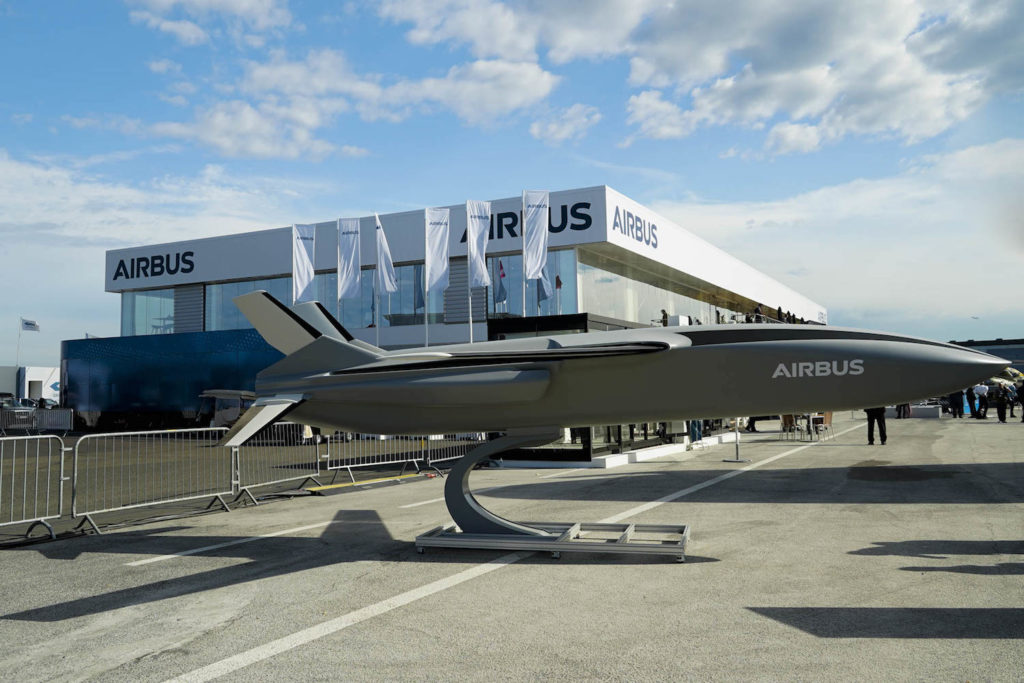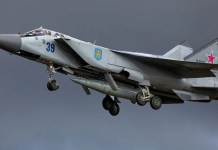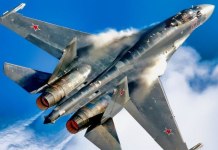After Germany and France, Spain has signed an initial framework contract with European aerospace giant Airbus for the development of a new generation fighter (NGF) under the sixth-generation Future Combat Air System (FCAS) jet program.
UAE Visa Ban Starts To Pinch Pakistan; 3000 Jobs Lost In First Week As Indian Workers Rejoice

The deal confirms Airbus as Spain’s prime contractor in the low observability domain of the FCAS program.
The signature formally concludes a 10-month-long “on-boarding” process, making Spain the third nation in the multinational effort which has been initiated by France and Germany.
“This signature builds on Airbus’ acknowledged role as the aerospace and defense prime contractor in Spain and ensures we can support Spain’s best interests by contributing our proven design, industrial and technical capabilities, as well as our experience in successful sovereign European programs,” said Alberto Gutiérrez, president of Airbus Spain.
The deal is seen to give Spain a similar status as France and Germany during the FCAS initiative’s Joint Concept Study activity which includes a Phase 1A work package launched in February 2020.
In a tweet, Bruno Fichefeux, head of the FCAS Program, said, “With the official signature of the Spain industry contracts, all 3 partner nations and their industries are fully on-boarded on #FCAS which will be the largest European defense collaborative program for the 21st century.”
“With the official signature of the Spain industry contracts, all 3 partner nations and their industries are fully on-boarded on #FCAS which will be the largest European defence collaborative programme for the 21st century.”
B. Fichefeux, Airbus #TMB2020 pic.twitter.com/e9OARzS4kM— Airbus PRESS (@AirbusPRESS) December 9, 2020
The contract will cover initial work on developing the program demonstrators along with maturing the cutting-edge technologies. The process is aimed at beginning the demo fight tests of the next-generation fighter in the second half of 2026.
/arc-anglerfish-arc2-prod-mco.s3.amazonaws.com/public/UQNIDVJ2RJADBHLNUYV3GU55I4.jpg)
Sixth Generation Program For Europe
Much like the US Air Force’s Next Generation Air Dominance (NGAD) program, the FCAS program has been designed for the development of a sixth-generation fighter jet for Europe.
Airbus, Indra Sistemas, and the French aerospace duo of the Thales Group and Dassault Aviation are all involved in the program. It will develop NGF, remote carrier, combat cloud, engine, sensors, low observability, and inter-consistency, and Simlab — a process-oriented multidisciplinary simulation environment that helps to accurately analyze the performance of complex assemblies.

FCAS Concept
While Dassault will be the prime contractor for the fighter, Airbus is likely to lead the development of accompanying remote carrier vehicles and the broader system’s supporting combat cloud.
With Europe not possessing a fifth-generation fighter jet of its own, the FCAS program offers the trio of countries the opportunity to skip the development of fifth-generation fighters like the F-35 Lightning and F-22 Raptors stealth fighters.
The program will enable the European nations to invest their resources in fielding a much more advanced sixth-generation fighter to replace their fourth-generation warplanes like France’s Rafales, Germany’s Eurofighter Typhoons, and Spain’s F-18 Hornets.
So, what can be expected of the newest fighter jet which will fly in the skies in the next decade or so?

FCAS Mock-Up At Paris Air Show
According to the Paris Air Show mock-up of 2019, the FCAS fighter would have an elevated bubble canopy that will provide excellent visibility to the pilot.
A Twitter post revealed the pilot is likely to have a huge digital screen in front of him, which will enable him to have a detailed view of things including the maps.
In addition, owing to the extremely high costs involved in developing different seat variants of fighters, the FCAS is planned to be a single-seat aircraft, powered by two engines along with F-35-style air intakes.
According to Aviation expert Kyle Mizokami, writing for Popular Mechanics, the FCAS will have a blended body-wing formation which will increase the interior volume of the jet. It will allow the fighter to have more space for internally stored fuel and weapons.
The fighter is likely to have a single set of low-angle stabilizers that replace the traditional, separate horizontal and vertical stabilizers to make the aircraft as stealthy as possible.





